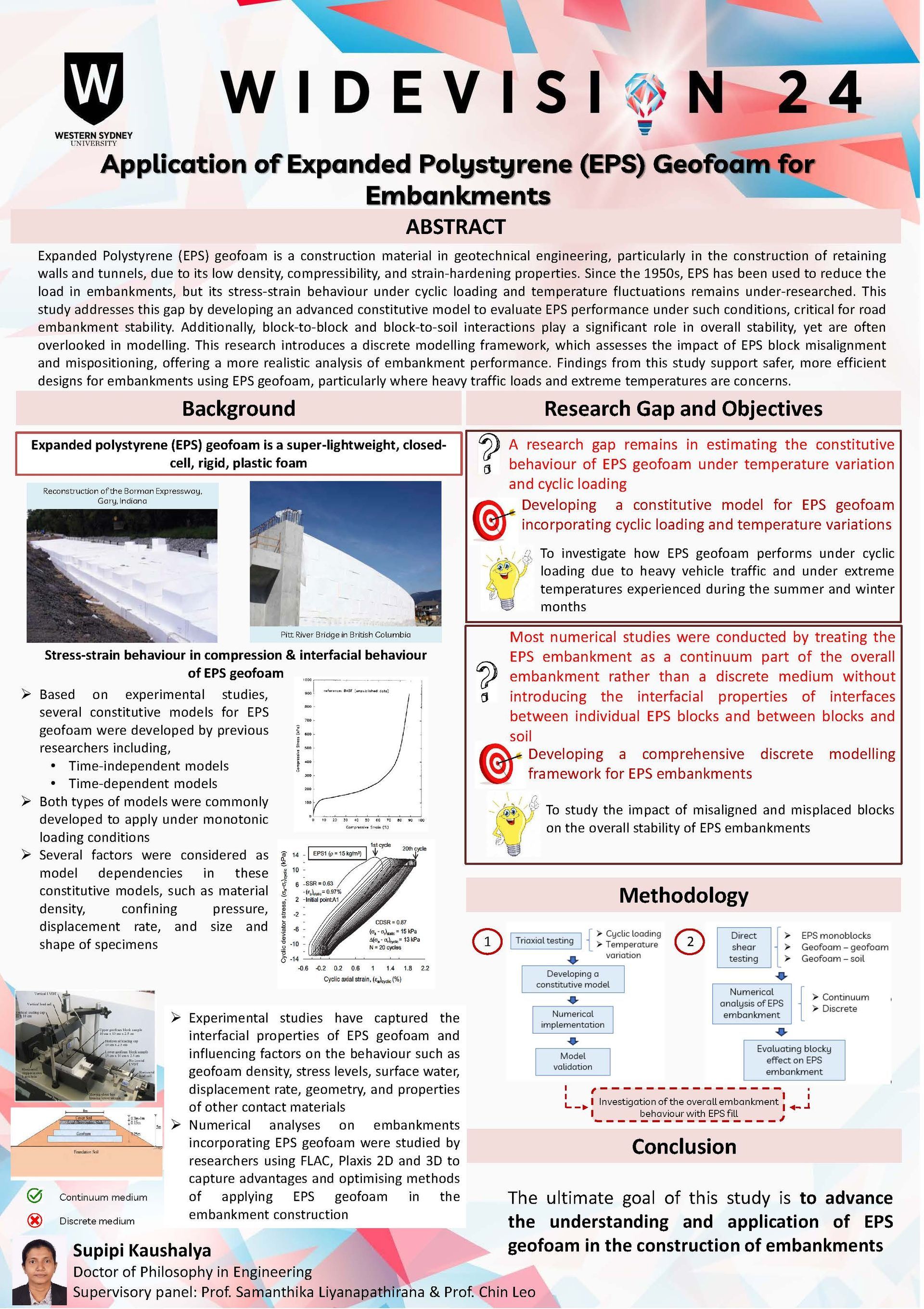I am a Doctoral Researcher at the School of Engineering, Design and Built Environment at Western Sydney University, specializing in geotechnical engineering. I have been awarded the Western Sydney University Postgraduate Research Scholarship for my higher degree research. I hold a B.Sc. (Hons.) in Civil Engineering and an M.Sc. in Geotechnical Engineering from the University of Moratuwa, Sri Lanka. My doctoral research focuses on advancing the use of Expanded Polystyrene (EPS) geofoam in embankment construction under the supervision of Professor Samanthika Liyanapathirana and Professor Chin Leo. My work aims to contribute to innovative, sustainable solutions in geotechnical engineering.
Supipi Kaushalya
Application of Expanded Polystyrene (EPS) Geofoam for Embankments
PROJECT

With respect for Aboriginal cultural protocol and out of recognition that its campuses occupy their traditional lands, Western Sydney University acknowledges the Darug, Eora, Dharawal (also referred to as Tharawal) and Wiradjuri peoples and thanks them for their support of its work in their lands in Greater Western Sydney and beyond.
Acknowledgement of Country
Western Sydney University Copyright © 2004-2024 | ABN 53 014 069 881 | CRICOS Provider No: 00917K | TEQSA Provider ID: PRV12061 (Australian University)

